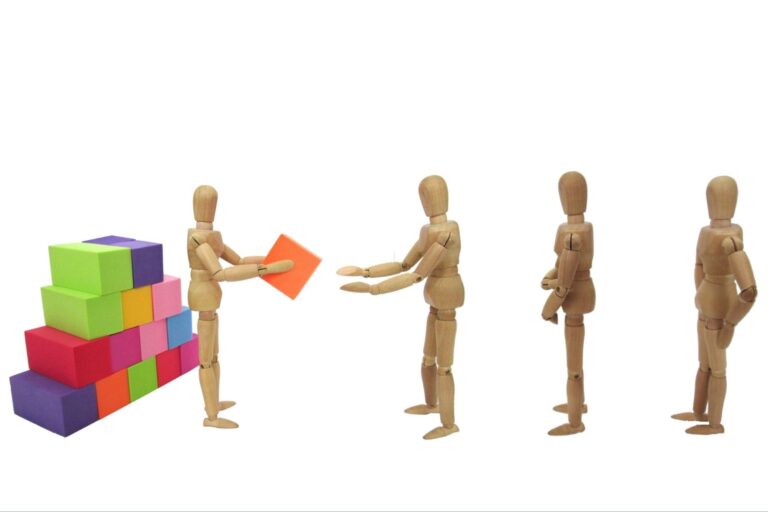Sales Development Representatives (SDRs) are critical to most every company’s go-to-market strategy. Depending on your company’s stage of growth and its specific GTM strategy, the SDR function might be the most impactful team in your revenue machine. As such, SDR development is a high priority.
However, too many organizations view the SDR role as a disposable function. It’s a meat grinder profession, with an inherent volatile mix of success and failure.
It doesn’t have to be that way. It shouldn’t be that way. With a commitment to smart leadership you can build a strong culture of SDR development. This increases performance not just in the short-term in their role, but also long-term in other roles throughout the broader Sales organization.
Selecting the right team
Building a high-performance SDR team first requires selecting the right team members.
Through experience, I’ve discovered that new SDRs benefit greatly from being intellectually curious. They generally excel in holding themselves accountable, and, most importantly, are very coachable.
You’ll note that experience isn’t high on the list. The old adage, “hire for attitude, train for aptitude” applies here. It’s supported by industry trends too. The Bridge Group reports in its Sales Development (SDR) Metrics & Comp Report that experience required at hire has been halved the past ten years, from 2.5 years in 2010 to 1.2 years in 2020.
Quickening SDR ramp time
Every Sales function has a short ramp, and SDRs are certainly no exception. It’s a profession where you eat what you hunt. Therefore, you need to empower and enable success within the team as quickly as possible.
According to The Bridge Group, the average ramp time for an SDR is 3.1 months. That has been stable over the past several years. Effectively onboarding new associates is critical in getting them quickly established and successful in the organization.
Resist the temptation to skimp in your initial SDR training. You’ll likely feel time pressure, what with a super short ramp time, but there is no escaping the value of an effective onboarding process. You’ll gain multiple returns on your investment if you take your time to do it correctly.

Create a standardized process. Have all your resources organized for easy reference, be it written documents or videos. Establish clear expectations, for the new SDR and the SDR manager, for each step in your process. And, most importantly, pair new reps with successful veterans, both SDRs and Account Executives (AEs).
Great learning experiences are created when new hires shadow veteran sellers as they interact with customers, facilitate demos and close deals.
Coaching your SDRs for success
As a former collegiate rowing coach, my favorite part of leading SDR teams is the ongoing coaching and development of reps. It’s also one of the most overlooked processes across revenue teams, both in small companies and large enterprises.
Effective coaching both empowers SDRs to hit quota and prepares them for the next step in their careers. Effectively coaching a Sales Development team is part performance coaching, part talent development.
When talent development is overlooked, it creates a bottleneck in the natural progression from SDR to AE. It also creates a situation where an underprepared SDR struggles to produce in a bigger selling role. Both present a bad look for the SDR organization.
I make it a point to have a coaching session with each SDR on the team every single week, without fail. While the sessions center around projections and the production expectations for the month, they’re designed to have SDRs exercise their critical thinking skills.
We’ll start with a look at what I call the “batting averages.” Then we discuss the correlations between activities, connections, meetings set and meetings held. Drop offs in any area present ideal coaching opportunities.
Flexing your coaching style for optimal results
Coaching your SDRs is about coaching each team member. Your team is made of unique individuals. They won’t all share the same exact strengths and opportunities for improvement, and they certainly have different personalities and communications styles and preferences.
There is no such thing as a “one size fits all” coaching model. Or, at least not one that works for everyone, every time.
A very good general leadership model is Ken Blanchard’s timeless Situational Leadership coaching model. This model recognizes a leader’s behavior needs to match with the follower’s abilities and needs.
Applied to Sales Development teams, the heart of the model lies in the determination of whether an SDR is learning or doing.
When first starting out, an SDR is learning, and in such a stage, she often needs to be told what to do, where, when and how. Plus, to facilitate learning, she also needs to know the why behind the what to do. Just like in athletics, it’s sometimes a case of show and tell.
After SDRs have learned, they move into a doing stage, but it’s not always going to work out perfectly, and those coaching opportunities will present themselves.
In that stage, the SDRs might very well know what to do, as well as how, when and the like. Here, the leader shouldn’t be telling. Rather, they should be asking, probing the SDR to unlock the answers they already know, but are struggling to find.
Coaching in this “doing” stage is a two-way conversation. Early in an SDR’s tenure, it might be a case of “let’s talk, and I, the leader, will decide.” Later, with the benefit of more experience and history of proven results, it might evolve into a case of “let’s talk, and you, the SDR, will decide.”
Developing SDR career paths
When you lead and coach your SDRs effectively, you lose your SDRs. That’s right, they move on in their careers.
According to The Bridge Group, the average tenure of an SDR now sits at 1.8 years, and over 93 percent of companies have at least one form of an SDR career path; 56 percent offer two or more.
Weekly coaching sessions help prepare SDRs for taking the next steps in their careers. Through them, they become well-versed in the fundamentals of your sales processes and models, clearly understand organizational expectations, and know what good looks like.
Additionally, promotional transitions are eased when you’ve invested in your SDRs the opportunity to shadow their AEs on calls. A great coaching experience is empowering an SDR to take over from an AE the running of an initial discovery call.
There’s no greater motivator than seeing how success is accomplished and experiencing, first hand, how your contributions affected the final outcome. Shadowing AEs boosts an SDR’s immediate performance, and sets them up for success when they transition into new roles.
Develop Quota-Busting Account Executives
Sales Development Representatives are important cogs in the GTM machine, but too often they’re left treading water in a “sink or swim” approach. Establish a regular cadence of coaching meetings, focus on a critical few success factors, and provide opportunities to learn best practices from others in the organization. In doing so, your SDR team’s performance will fuel your revenue machine at the top of the funnel.
And, you’ll develop your next group of quota-busting Account Executives.












